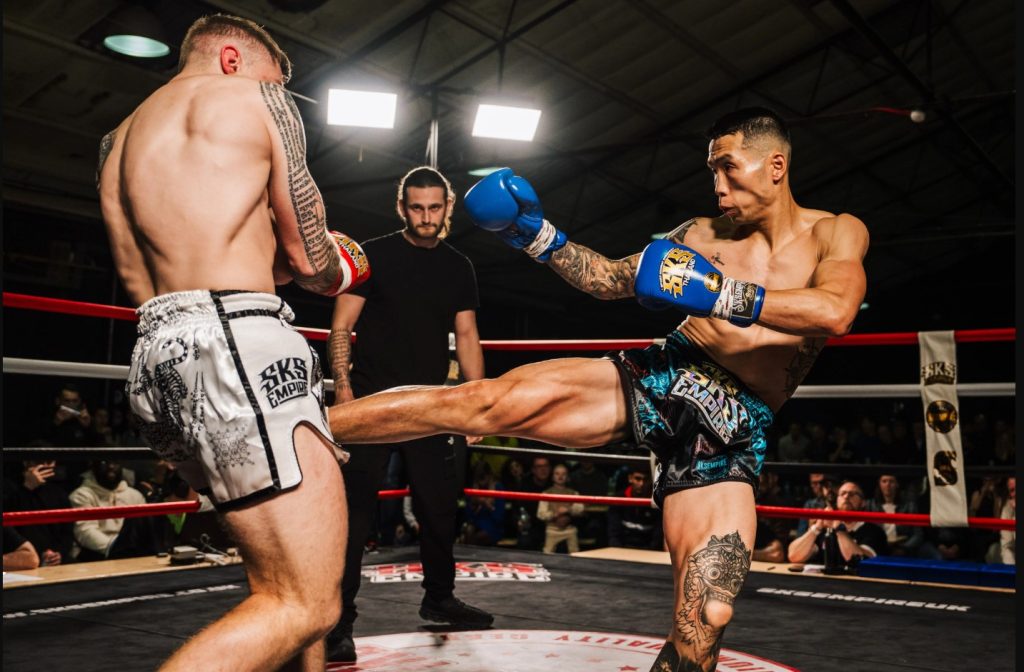Muay Thai, often referred to as “The Art of Eight Limbs,” is one of the most respected and dynamic martial arts in the world. Combining punches, kicks, elbows, and knees into a fluid, full-body combat style, Muay Thai has captured the attention of fighters and fans alike across the globe. But where exactly did it originate? The answer lies in the rich cultural and military history of Thailand.
Crazy Time: Table of Contents
Origins of Muay Thai: A Martial Art Born in War
Muay Thai is deeply rooted in Thai culture and history, with origins tracing back over a thousand years. It evolved from older martial arts practices used by Siamese soldiers for battlefield combat. In the ancient Kingdom of Siam (now Thailand), warriors trained in Muay Boran—an earlier, more traditional form of Thai fighting.
As times changed and peace prevailed, Muay Boran evolved from a battlefield necessity to a sport and cultural performance art, eventually giving birth to modern Muay Thai.
Evolution of Muay Thai
| Period | Key Development | Description |
|---|---|---|
| Pre-13th Century | Tribal Combat Styles | Early hand-to-hand combat in Southeast Asian tribes |
| 13th–15th Century | Muay Boran | Developed as a military training system in the Sukhothai era |
| 16th–18th Century | Royal Endorsement | Kings like Naresuan and Sanphet promoted it for soldier training |
| 19th Century | Transformation to Sport | Began to be practiced in boxing rings with rules |
| Early 20th Century | Modernization | Gloves, rounds, and referees introduced; became organized sport |
| Present Day | Global Expansion | Practiced worldwide, featured in MMA and fitness programs |
The Cultural Backbone of Thailand
Muay Thai is not just a fighting style—it’s a national sport and a symbol of Thai identity. Deeply ingrained in Thai traditions, Muay Thai events often begin with a “Wai Khru Ram Muay”, a ritual dance that fighters perform to honor their trainers, ancestors, and the sport itself.
Muay Thai vs. Other Martial Arts Origins
| Martial Art | Country of Origin | Key Characteristics |
|---|---|---|
| Muay Thai | Thailand | Uses fists, elbows, knees, shins (“8 limbs”) |
| Karate | Japan | Linear strikes, kata, point fighting |
| Taekwondo | South Korea | High kicks, fast footwork, sport-oriented |
| Boxing | England | Focus on punching and footwork |
| Jiu-Jitsu | Brazil/Japan | Grappling, ground control |
| Kung Fu | China | Diverse styles, traditional forms |
Key Historical Figures in Muay Thai
Several legendary figures have helped shape the history and global reputation of Muay Thai.
- Nai Khanom Tom: An 18th-century warrior who is considered the “Father of Muay Thai.” According to legend, he defeated 10 Burmese fighters in a row after being captured, showcasing the effectiveness of Thai martial arts.
- King Prachao Sua (The Tiger King): Famous for disguising himself as a commoner to compete in Muay Thai fights. His love for the sport helped cement its popularity in Thai culture.
Muay Thai’s Global Spread
From its humble beginnings as a form of self-defense and military training, Muay Thai has become a global sport. In the 1990s and 2000s, it gained international attention through televised fights, tourism in Thailand, and its effectiveness in Mixed Martial Arts (MMA) competitions.
kaisi Time: Today, Muay Thai gyms can be found in nearly every country. Fighters from all over the world travel to Thailand to train in authentic camps like Tiger Muay Thai (Phuket) and Fairtex (Pattaya).
Countries with Strong Muay Thai Presence Today
| Country | Role in Muay Thai’s Globalization |
|---|---|
| Thailand | Origin and cultural epicenter |
| USA | Rapidly growing sport and fitness trend |
| Netherlands | Known for combining Muay Thai with Dutch kickboxing |
| Australia | Hosts major Muay Thai events and world-class fighters |
| Brazil | Strong amateur and professional fighter base |
| UK | Popular among MMA and combat sports communities |
Training in Muay Thai Today
Modern Muay Thai training focuses on both physical conditioning and technique. A typical session includes:
- Shadow boxing
- Pad work
- Heavy bag training
- Clinch drills
- Sparring
- Running and body conditioning
Fighters train hard to build endurance, power, and timing. Even recreational practitioners benefit from its full-body workout and self-defense utility.
Muay Thai as a Sport and Way of Life
The government and sports bodies are now pushing for Muay Thai’s inclusion in the Olympic Games, and it was officially recognized by the International Olympic Committee (IOC) in 2016 under the International Federation of Muaythai Associations (IFMA).
More Than Just a Martial Art
Kg Time: Muay Thai is much more than a combat sport—it’s a cultural treasure and a proud representation of Thai history, discipline, and national identity. From ancient battlefield techniques to international tournaments, Muay Thai has evolved into a global phenomenon while staying deeply connected to its roots in Thailand.
Whether you’re watching a world championship bout or stepping into a gym for the first time, understanding the heritage behind Muay Thai only deepens your appreciation of the “Art of Eight Limbs.”

